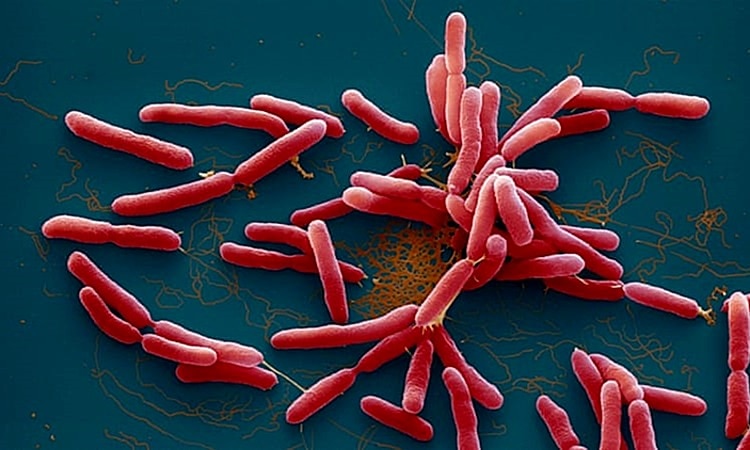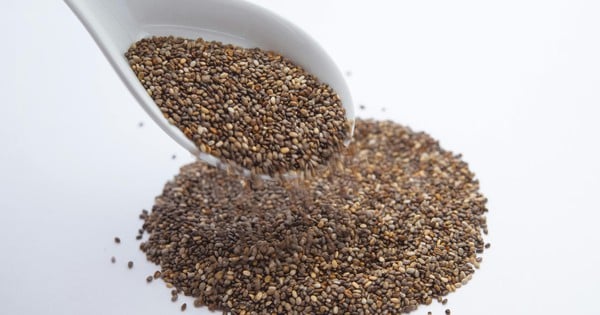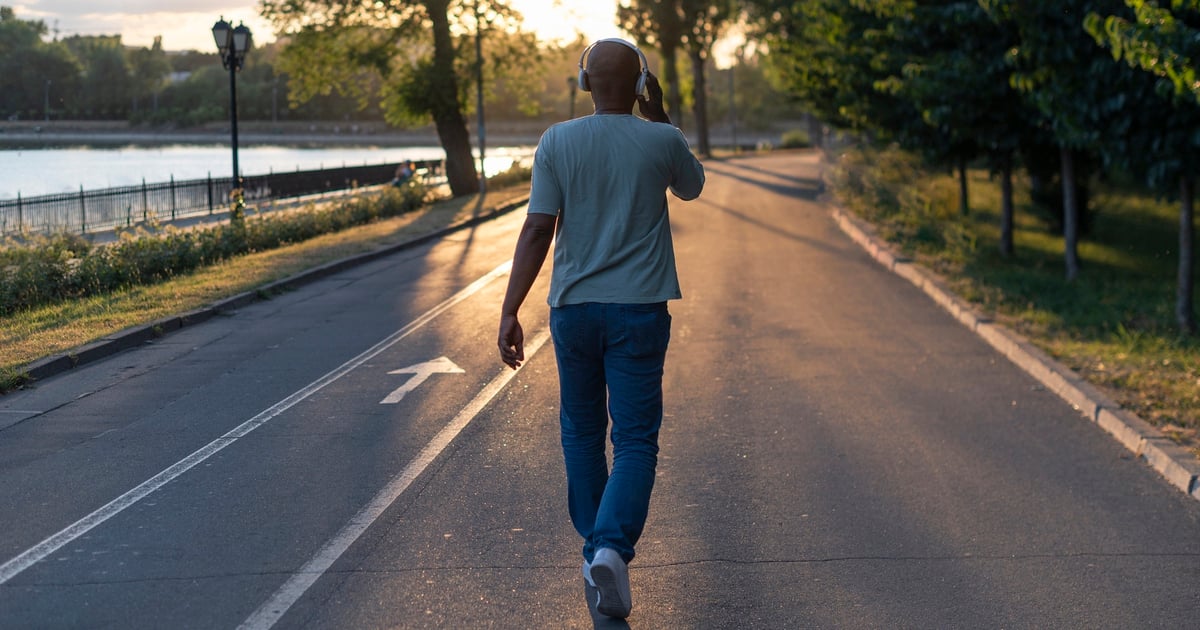Medical news September 5: Why do many people get flesh-eating bacteria?
Hoa Binh General Hospital said that the unit is treating two patients with Whitmore's disease (infection with "flesh-eating" bacteria). One of them has a serious prognosis and is receiving intensive treatment and care.
More cases of flesh-eating bacteria
Accordingly, the first patient is Ha Ngoc T. (43 years old, residing in Da Bac district, Hoa Binh), who has been working as a worker in a southern province for more than 10 years, whose daily job is delivering frozen goods to agents.
 |
| Illustration |
Before being admitted to the hospital, patient T. was discharged with a persistent high fever. He had been examined and treated, but the fever only subsided and did not go away completely. On August 28, the family asked for the patient to stop treatment and return to his hometown (Hoa Binh).
Upon arrival in Hoa Binh, the patient was admitted to the hospital with high fever, chills, respiratory failure, septic shock and multiple organ failure. The patient was quickly placed on a ventilator, continuous blood filtration, vasopressors, and broad-spectrum antibiotics, including antibiotics specifically for Whitmore disease.
Paraclinical results showed that the patient had bilateral pleural effusion and liver abscess with sepsis caused by Whitmore bacteria (Burkholderia pseudomalle).
Currently, patient T. is still in critical condition, receiving treatment, intensive care and consultation from many specialists.
The second patient is Bui Thi C. (59 years old, from Lac Son, Hoa Binh), with a history of diabetes. Before being admitted to the hospital, the patient had a high fever, swelling, heat, redness, pain in the right wrist, cough and increasing difficulty breathing.
Patient C. was hospitalized in respiratory failure requiring non-invasive mechanical ventilation, continuous high fever, chills, infectious-toxic condition, cough with phlegm, abscess in the right wrist area, CT scan showing solid opacities and bilateral pleural effusion.
Patient C. is now out of danger. He is expected to be discharged after about a week and will continue to receive oral medication at home for 3 to 6 months.
Whitmore disease is not a new disease in Vietnam. Every year, the whole country has about 100-200 people suffering from this disease. Since the beginning of the year, Tam Anh General Hospital in Ho Chi Minh City has treated more than 10 cases, including 4 cases that occurred in the last 3 months, which is the rainy season in the Southern region.
The flesh-eating bacteria Burkholderia pseudomallei that causes Whitmore's disease is a gram-negative bacterium that can survive in harsh conditions such as nutrient-poor, dry environments. They often live in naturally moist soil environments, especially the soil layer 20-40 cm below the surface.
This bacteria has the ability to cause strong inflammation, leading to damage to surrounding tissues and structures, including the discs and vertebrae.
The main route of infection is through damaged skin coming into direct contact with contaminated soil or through inhalation of contaminated soil particles.
The disease often occurs in people who are frequently exposed to soil and water such as farmers, construction workers, gardeners, soldiers, etc.
Whitmore disease can occur in humans and animals such as dogs, cats, cows, horses, rats and is often scattered throughout the year but increases during the rainy season.
This disease occurs at all ages, men often have a higher rate of infection than women. People with underlying diseases such as diabetes, alcoholism, long-term use of corticosteroids, chronic lung and kidney disease, etc. are often at higher risk of infection than normal people.
The disease can also occur in people who were previously completely healthy and there have been no recorded cases of transmission between humans and animals.
Recent environmental surveys have shown that more than 80.0% of soil samples in southern Vietnam tested positive for Burkholderia pseudomallei bacteria. People should use protective equipment (such as boots, gloves) and bandage open wounds, cuts or burns if they have close contact with soil or water.
People at high risk should avoid going outside after heavy rain, especially in rural areas, to prevent the risk of Whitmore disease.
Because there is no vaccine to prevent the disease, people need to regularly wash their hands before and after preparing food, before eating, after using the toilet, and after working in the fields.
Do not bathe, swim, or dive in ponds, lakes, or rivers in or near contaminated areas. If you have open wounds, ulcers, or burns, avoid contact with potentially contaminated soil or water.
When patients have symptoms of prolonged high fever, skin and soft tissue infections, pneumonia, abdominal pain, back pain, headache, etc., they should go to medical facilities with high technical expertise for early diagnosis and treatment.
New information on the case of many students in Thai Nguyen being hospitalized
The People's Committee of Thai Nguyen province directed the Department of Health to collect samples and send them to the Central Hospital for Tropical Diseases for testing to clarify the cause of the incident.
According to information from the Thai Nguyen Provincial People's Committee, up to now, the area has not recorded any new cases related to the hospitalization of a series of students from Thai Nguyen Industrial College. The health status of the patients being treated is progressing well and is basically stable.
Through testing at medical facilities in the province, the cause of the series of unusual hospitalizations of students in recent days has not yet been determined.
Currently, the People's Committee of Thai Nguyen province has directed the Department of Health to collect samples and send them to the Central Hospital for Tropical Diseases for analysis and testing to clarify the cause.
It is known that after the incident, the Steering Committee for Disease Prevention and Control of Thai Nguyen province issued a document requesting heads of departments, branches and sectors to strengthen close direction on disease prevention and control work in the province.
Continue to strictly implement the direction of the Ministry of Health and the People's Committee of Thai Nguyen province in proactively implementing epidemic prevention and control during the back-to-school season.
The Department of Health, Thai Nguyen Central Hospital, and Thai Nguyen Provincial Center for Disease Control (CDC) closely monitor cases to prevent the disease from spreading in the community.
Closely coordinate with the Central Institute of Hygiene and Epidemiology to assess risks, analyze the situation, and have effective response plans for possible epidemic situations.
Directing well the work of patient admission, treatment, infection control and cross-infection prevention in medical examination and treatment facilities...
Isolate all students in 3 dormitory rooms with deceased and hospitalized patients, ensure daily meals are provided in the rooms.
Clean floors, doorknobs, stairs, etc. with regular disinfectant solution.
Notice to 1,102 students of the school, including 486 students in dormitories, 212 students from Ha Giang to monitor their health and inform the school if there are any unusual signs.
Thai Nguyen City Medical Center continues to closely monitor and supervise the school, providing guidance on implementing isolation, disinfection, and environmental sanitation measures.
Fully implement the information and reporting regime for infectious diseases according to the circular of the Ministry of Health on guidelines for the information, reporting and declaration regime for infectious diseases.
Previously, on September 2 and 3, a series of students from Thai Nguyen Industrial College had to be hospitalized with abnormal symptoms, one case died.
Immediately after receiving the report, the People's Committee of Thai Nguyen province directed the inspection and settlement work. The Department of Medical Examination and Treatment Management, Ministry of Health also requested medical facilities to support Thai Nguyen in treating patients.
How to prevent kidney stones?
If kidney stones are left untreated for a long time, they can lead to a number of dangerous complications such as hydronephrosis, urinary tract infection, nephritis, kidney abscess, renal parenchyma atrophy, impaired kidney function, and even blood infection that can threaten the patient's life.
In 70-80% of cases of kidney stones, the patient can expel the stones from the body through the urinary tract. However, the case of expelling stones during normal urination only occurs with small kidney stones.
According to Associate Professor, Dr. Vu Le Chuyen, Director of the Center for Nephrology and Urology, Tam Anh General Hospital, Ho Chi Minh City, the larger the stone, the higher the risk of getting stuck.
Normally, a stone with a diameter smaller than ≤ 5mm can pass on its own, and only large stones with a diameter larger than > 5mm can get stuck.
There are two factors that affect the ability and rate of self-elimination of kidney stones: Kidney stone size and location.
Kidney stone size is the main factor in determining whether the stone can pass naturally. 80% of stones are smaller than
Only stones measuring 4-6mm in size need treatment. However, about 60% of kidney stones of this size are still excreted naturally. This process takes an average of 45 days.
Stones larger than 6mm usually require medical treatment to pass from the body. Only about 20% of stones of this size can pass naturally. However, the time to pass is often very long, up to a year.
Stones located at the end of the ureter, closer to the bladder (not at the end attached to the kidney) are more likely to move on their own to be eliminated from the body during normal urination.
Research shows that about 79% of these stones will pass on their own. 48% of stones in the lower ureter near the bladder will pass out of the body during urination without any medical treatment.
Patients should drink plenty of water and exercise regularly. Jumping rope is a great option. Stones can loosen and increase the chance of spontaneous elimination, especially lower calyx stones.
When newly formed kidney stones have not caused complications, the urinary tract is wide, not deformed or congenitally narrowed..., the body can urinate out stones of 2-3 mm, even up to 8-9 mm. The doctor can help the patient urinate more easily, by giving them plenty of water and anti-inflammatory drugs... so that the urinary tract lining does not swell and obstruct the stones.
In addition, the doctor may also prescribe the patient to use drugs to dilate the urethra to easily expel kidney stones from the body. Therefore, not all stones require surgery. Many cases can be treated with medication.
The size of an adult kidney is about 12cm long. Therefore, if the kidney stone is smaller than 5mm, the patient only needs to take medicine and drink plenty of water. The stone can be eliminated through the urinary tract. Kidney stones of 5-7mm are not a big problem, only worrying when the kidney stone causes infection and recurs many times.
Kidney stones can cause infections. However, infections can also cause kidney stones. Therefore, when a person with kidney stones has symptoms of a urinary tract infection, it is necessary to treat both the kidney stones and the urinary tract infection at the same time. This will help to completely treat the condition.
During treatment, the patient may be prescribed medication or subcutaneous lithotripsy. However, the patient must first completely treat the infection. Because if the infection persists, the doctor cannot perform lithotripsy surgery. On the other hand, if the infection recurs, the risk of stones continuing to form after lithotripsy is high.
For large stones, open surgery is the appropriate treatment method, helping to completely remove the stone. The open surgery method was previously optimal, neat and cheapest.
Open surgery has the advantage of completely removing the stones. However, there are now many high-tech surgical methods to gradually break up the stones from the body.
If the kidney stone is small (only 1cm), radiopaque, and not too hard, the doctor can apply the extracorporeal lithotripsy method. The advantages of this method are that it is less invasive, does not require hospitalization, and is quite cheap. Sometimes, kidney stones cannot be completely crushed in one session. The patient may need to undergo lithotripsy 2-3 times to completely destroy them.
When the kidney stone has moved down the ureter near the bladder, the doctor can use a semi-rigid endoscope and laser to break it up. In cases where the kidney stone is still high up, the doctor will use a flexible endoscope to bring it up.
When kidney stones are in the mid-renal region, the doctor will use a percutaneous nephrolithotomy machine to puncture a small hole in the kidney to break the stones. This endoscopic lithotripsy method is being applied the most at Tam Anh General Hospital because of its minimally invasive advantages. Patients do not feel pain, have little bleeding and recover quickly. Moreover, high-resolution 2D-3D screens help doctors handle stones accurately and cleanly right in the organ.
In addition, doctors advise everyone to have a regular health check-up every 6-12 months to detect kidney stones in particular and urinary stones in general early to have an appropriate treatment plan.


































Comment (0)